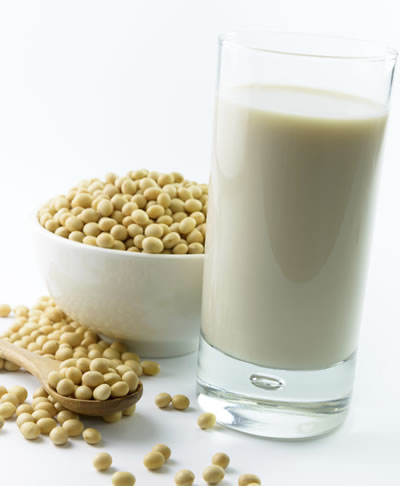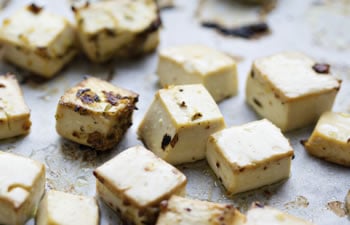Is Soy Bad For You? Good? Get the Facts
A lot of people are confused about soy foods and supplements and want to know: “Are they good for me? Bad for me? And what should I look for when grocery shopping?” Get answers from Pritikin’s doctors and dietitians.

Weight Loss, Blood Sugar Control
Whole soy foods may also enhance weight loss, improve blood sugar control, and reduce insulin levels.
Breast Cancer
Some literature also suggests that soy foods (not soy supplements) may protect against breast cancer.
For example, high intake of soy foods like tofu among women in Asian countries is associated with rates of breast cancer that are five times lower than that of women in the U.S., who eat far less soy.
A recent study that followed 6,235 American women with breast cancer for nine years found a 21% decrease in all-cause mortality in those who consumed the largest amounts of soy foods compared to those who consumed the least.
But do be careful if you’ve never been a soy food eater but then start consuming a lot of soy after a diagnosis of breast cancer. If you’re taking a commonly prescribed breast-cancer drug called tamoxifen, soy foods may reduce the effectiveness of this drug. That was the finding of a recent study on rats conducted at Georgetown University. Above all, steer clear of supplements like concentrated soy genistein. And always talk with your oncologist about what’s best for you.
Good Soy Choices When Grocery Shopping
When choosing products made from soybeans, good choices include:
-
Soybeans | Available in most grocery store freezer sections, often described as edamame.
-
Soymilk | Vanilla, original, or unsweetened.
-
Tofu | Unflavored/unmarinated – found in refrigerator cases.

Soymilk vs Other Milks
There are a lot of different types of milks in grocery stores now, such as almond, rice, and coconut milks.
Which milks are best?
There are two.
The first good choice is skim (also called fat-free or nonfat) cow’s milk. “With skim milk, you’re getting the key nutritional riches we expect in milk – calcium, vitamin D, vitamin B-12, and protein – but without the artery damaging saturated fat that’s found in 1%, 2%, and whole milks,” states Kimberly Gomer, MS, RD, Director of Nutrition at the Pritikin health resort.
Another good choice is fortified soymilks (original or unsweetened). Like nonfat cow’s milk, you’re getting all the good stuff (calcium, vitamins D and B-12, and protein) and none of the bad stuff (saturated fat).
“But don’t expect soymilk, in and of itself, to lower total and LDL (bad) cholesterol levels,” points out Kimberly Gomer, MS, RD, LDN, Director of Nutrition and educator at Pritikin.
Yes, in years past, science suggested that soy protein could lower cholesterol levels. In fact, in 1999 the Food and Drug Administration ruled that 25 grams of soy protein a day could reduce cholesterol and therefore help reduce heart disease risk. “But in recent years, the evidence on soy’s benefits in terms of cholesterol lowering has weakened,” observes Gomer.
“That said, there is sufficiently good evidence that replacing even lean meat and white poultry with less processed soy foods like tofu and edamame will likely lower total cholesterol, LDL cholesterol, and non-HDL cholesterol, and reduce heart disease risk.”
Bottom Line: Is soy bad for you? Potentially, if it’s soy that comes in concentrated pill or powder form. Stick to whole food sources like soymilk, tofu, soybeans (edamame), and tempeh (an Asian food made from fermented soybeans).
Keep in mind, too, that the health-promoting chemicals in soybeans that have gotten so much attention in recent years – the isoflavones – are plentiful in all beans: pinto beans, black beans, lentils, red beans, and so on. And these beans generally derive a mere 3 to 9% of their calories from fat. Soybeans, by contrast, are 37% fat – and therefore more likely to promote weight gain.
But all beans, including soybeans, are full of nutritional riches – and are a very healthy, protein-packed alternative to meat or poultry. Instead of increasing our cholesterol levels, like animal meat, beans lower it.
A Simple, Tasty Tofu Recipe
A novice to tofu? Try this super-simple recipe from Pritikin’s award-winning Executive Chef Anthony Stewart. “This is one of my favorites, I must admit,” he laughs.

Chef Anthony takes a block of firm tofu (firm tofu is the type that sits in a container of water in the refrigerated section of your grocery store), and picks it up and squeezes it with both hands to let some of the water out.
Then, as if he’s cutting up a loaf of bread, he slices his tofu into about four ¾-inch-thick slices, and marinates his slices in balsamic vinegar, chopped garlic, and dried oregano for 4 to 5 minutes.
He heats a large nonstick skillet over a high flame, and, using tongs, places his tofu slices in the skillet. When the side facing the skillet is darkened, he flips the tofu to the other side and darkens it, too, about 4 minutes per side.
When the tofu slices are nicely browned on both sides, Chef removes them from the skillet, and slices each into bite-size squares.
“I store them in a baggie in the refrigerator, and I use them for everything,” smiles Chef. “You know how people say, ‘Oh, I’m having a salad, but I need some protein like chicken or fish for it.’ Well, animals aren’t the only source of protein. Tofu is packed with protein, and so easy! You just toss these little tofu squares into your salad, and you’re getting plenty of rich, chewy, filling protein, but with none of the cholesterol and saturated fat of animal protein.”
Chef also enjoys his mighty little tofu squares as a snack. And he adds them to soups, marinara sauces, and whole grain dishes, like quinoa.
“Tofu is definitely a product you should stock up on in your refrigerator,” encourages Chef Anthony.